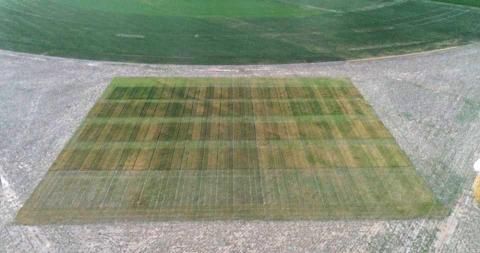What Have We Learned about Soybean Seed Constituents in Irrigated and Dryland Producer Fields in Nebraska?
June 14, 2021
With a continuous decline in seed protein concentration in U.S. soybeans, UNL researchers examined how irrigation practices in Nebraska may contribute to this issue for soybean growers.
Soybean Fertility Study in Western Nebraska: What is Limiting High Yield and Protein?
April 22, 2021
Results of a study on soybean fertility throughout 2019 and 2020 and updated fertilizer recommendations for growers.
Spring Wheat Research in Western Nebraska
August 13, 2020
Many farmers view spring wheat as a rotational crop with a purpose to break the weed and pest cycles, build up the residue cover and increase yield of corn the following years.
Seeding Practices and Nitrogen Management for Western Nebraska Soybean: What Matters and Why
March 30, 2020
Continuous corn is the most common irrigated crop sequence in southwest Nebraska. Although rotating to other crops, such as soybeans, can mitigate some production issues of continuous corn and often boost the next year’s corn yield, larger adoption of soybeans has not readily occurred in this area.
Should I Consider Spring Wheat in My Cropping System?
February 19, 2020
Beginning in the 1970’s winter wheat was included in Ecofarming rotations with no-till corn or grain sorghum and summer fallow as a means to capture and maintain soil water through snow retention, increased infiltration, reduced evaporation, and weed control with herbicides instead of tillage.
Soybean Fertility Study in Western NE: What is Limiting High Yield and Protein?
February 7, 2020
Public universities and private companies were contacted early in 2019 to provide input on the study protocol that would compare multiple fertility programs for soybeans in western NE. A total of 12 fertility programs were compared.
Seeding Recommendations for Irrigated Soybean and Dryland Corn in West-Central Nebraska
January 23, 2020
Continuous corn is the most common irrigated crop sequence in southwest Nebraska. Although rotating to other crops, such as soybeans, can mitigate some production issues of continuous corn and often boost the next year’s corn yield, larger adoption of soybean has not readily occurred in this area.
Main Factors Influencing Yellow Field Pea Protein Content in Nebraska
January 23, 2020
Yellow field peas (Pisum sativum L.) recently gained popularity across Nebraska due to their rotational benefits and increase in consumers' demand for plant-based alternatives to meat and dairy products.
 Twitter:
Twitter: 




